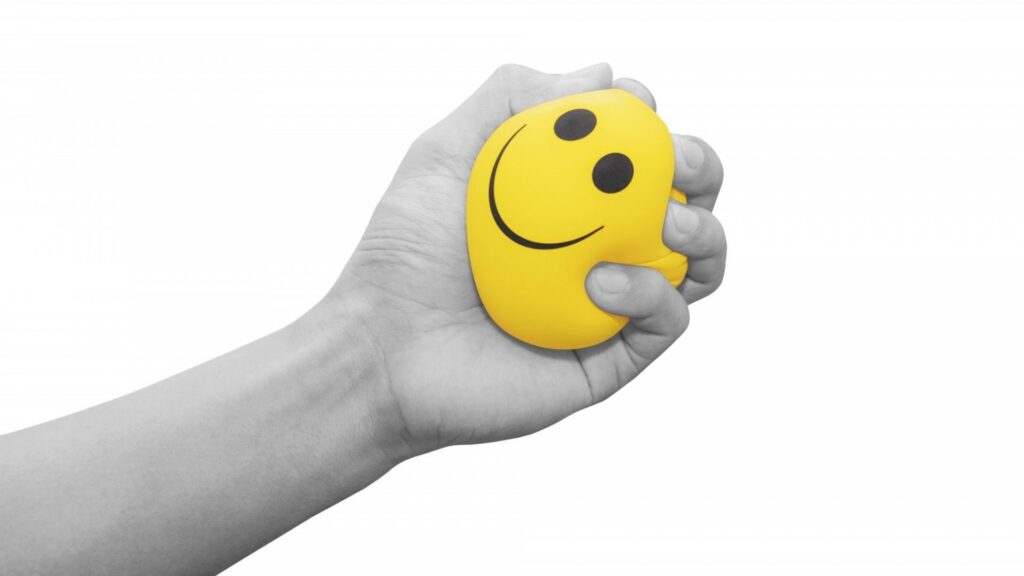Can Patience Be Learned?

Patience is often heralded as a virtue, yet it is also something that many people struggle to embody in their daily lives. With modern society’s emphasis on instant gratification, waiting for outcomes can feel excruciating. This raises a significant question: can patience be learned? Is patience an inherent trait, or is it a skill that can be cultivated through conscious effort and cognitive training? This article delves into the psychological and cognitive aspects of patience to determine whether it is a quality that can be developed over time.
The Definition and Importance of Patience

Patience, as a concept, refers to the ability to wait for something without getting angry, anxious, or frustrated. It involves self-control, delayed gratification, and tolerance for delay. Psychologically, patience is linked to emotional regulation, resilience, and overall well-being. People who exhibit patience are better equipped to handle stress, make thoughtful decisions, and maintain positive relationships.
Given the many benefits associated with patience, it’s no surprise that the question can patience be learned arises frequently. If patience leads to better mental health and stronger relationships, the ability to learn and improve this skill could offer profound personal and societal benefits.
The Psychological Perspective on Patience
From a psychological standpoint, patience can be considered both a trait and a state. As a trait, patience is viewed as a stable characteristic that some people naturally possess more of than others. This viewpoint suggests that some individuals are inherently more patient due to their genetic makeup, temperament, or early life experiences. However, if patience were solely a trait, the notion that can patience be learned would seem implausible. Fortunately, patience is also recognized as a state, which can be influenced by external factors and internal efforts.
Psychological research supports the idea that patience can be learned through behavioral changes, mindfulness, and cognitive restructuring. Cognitive-behavioral therapy (CBT) techniques, for example, help individuals identify and change the thought patterns that lead to impatience. By reframing negative thoughts and practicing emotional regulation, people can gradually increase their capacity for patience.
One study that sheds light on whether can patience be learned comes from the field of positive psychology. This study found that participants who engaged in mindfulness meditation practices experienced increased patience over time. Mindfulness meditation encourages individuals to focus on the present moment, observe their thoughts without judgment, and cultivate a sense of calm. By regularly practicing mindfulness, people become more aware of their impulses and better able to control them, thereby fostering patience.
The Role of Cognitive Function in Patience
Cognitive processes play a crucial role in answering the question, can patience be learned? Patience requires the ability to delay gratification, which involves several key cognitive functions: executive control, working memory, and emotional regulation. The prefrontal cortex, the part of the brain responsible for decision-making and impulse control, is heavily involved in the process of exercising patience.
In a classic experiment on delayed gratification known as the “Marshmallow Test,” children were asked to choose between eating one marshmallow immediately or waiting a few minutes to receive two marshmallows. The study demonstrated that the ability to delay gratification is linked to better life outcomes, including academic success, emotional stability, and social competence. Importantly, this experiment also raised the possibility that can patience be learned through cognitive strategies that improve self-control.
Training the brain to become more patient can involve techniques that enhance executive function. For instance, activities that strengthen working memory, such as puzzles, strategic games, or memory exercises, can improve an individual’s ability to delay gratification. Similarly, cognitive strategies that focus on regulating emotions, such as reappraising stressful situations or practicing gratitude, can enhance patience.
Recent neuroimaging studies provide additional evidence that can patience be learned by showing that the brain can change in response to specific practices. Neuroplasticity, the brain’s ability to reorganize itself by forming new neural connections, suggests that with consistent practice, individuals can develop greater patience. Through repeated efforts to control impulses and tolerate delays, neural pathways associated with self-control can become stronger, making patience a more accessible state.
Patience and Emotional Intelligence

Another avenue to explore the question, can patience be learned, is through the lens of emotional intelligence (EI). Emotional intelligence refers to the ability to recognize, understand, and manage one’s emotions, as well as the emotions of others. People with high emotional intelligence are generally more patient because they can regulate their emotions and maintain a calm demeanor in frustrating situations.
Emotional intelligence can be cultivated through practice and education, which suggests that patience can also be learned as a byproduct of enhanced EI. For example, by improving emotional self-awareness, individuals can recognize when they are becoming impatient and take steps to calm themselves down. Techniques such as deep breathing, progressive muscle relaxation, or even simply taking a break can help restore patience in emotionally charged situations.
Moreover, empathy, a key component of emotional intelligence, is closely related to patience. Understanding the perspectives and feelings of others makes it easier to be patient with them. By developing empathy through active listening and compassionate communication, people can foster greater patience in their interactions with others. Therefore, in asking can patience be learned, one must consider the potential of emotional intelligence training as a pathway to greater patience.
Behavioral Approaches to Learning Patience
Behavioral psychology offers another perspective on whether can patience be learned. According to behaviorist theories, behaviors can be shaped through reinforcement and punishment. In this context, patience can be reinforced by rewarding individuals for exhibiting patience and not giving in to impulsive behaviors.
For example, a person might use positive reinforcement to encourage patience by setting small rewards for themselves after successfully waiting for a desired outcome. Over time, this practice can help condition the brain to associate patience with positive experiences, making it a more natural response. Conversely, punishing impatience, such as by imposing consequences for acting impulsively, can help deter impatient behaviors.
The concept of delayed reinforcement is central to this approach. By gradually increasing the time between an action and its reward, individuals can learn to tolerate delays and build patience. This method, often used in behavioral therapy for children, can also be applied to adults who wish to improve their patience. Therefore, behavioral psychology provides a strong argument for the possibility that can patience be learned through reinforcement strategies.
The Role of Mindfulness and Meditation

Mindfulness and meditation practices have gained widespread popularity in recent years for their ability to reduce stress, enhance focus, and promote emotional well-being. These practices are also highly effective in teaching patience, as they encourage individuals to slow down, be present in the moment, and let go of the need for immediate outcomes. Thus, mindfulness offers a compelling answer to the question can patience be learned.
Through mindfulness meditation, individuals practice observing their thoughts and emotions without judgment, which helps them become more aware of their impatience when it arises. Instead of reacting impulsively, they learn to pause, breathe, and allow the moment to pass. This increased self-awareness and control over one’s reactions fosters a greater capacity for patience.
In addition to mindfulness meditation, other forms of meditation, such as loving-kindness meditation, can also promote patience by cultivating compassion and empathy. By regularly practicing these forms of meditation, individuals may find that they become naturally more patient in their interactions with others and more tolerant of delays and frustrations.
Social and Environmental Influences on Patience
Another important factor to consider in the discussion of can patience be learned is the role of social and environmental influences. Patience is not developed in isolation; it is often shaped by the culture, social norms, and environments in which individuals are raised and live.
For instance, some cultures place a high value on patience, viewing it as a sign of wisdom and maturity. In such cultures, patience is reinforced through social expectations and norms, making it more likely that individuals will learn to be patient. On the other hand, in cultures where instant gratification is the norm, patience may be less valued, and individuals may find it more challenging to develop this trait.
Social learning theory, which posits that people learn behaviors by observing and imitating others, also suggests that patience can be learned through modeling. If individuals are surrounded by patient role models, such as parents, teachers, or peers, they are more likely to adopt patient behaviors themselves. This highlights the importance of social and environmental factors in shaping patience, providing further evidence that can patience be learned is a question with a positive answer.
Challenges to Learning Patience

While there is significant evidence to support the idea that can patience be learned, it is also important to acknowledge the challenges involved in developing this trait. One of the primary challenges is the pervasive nature of modern society’s emphasis on speed and efficiency. The digital age has conditioned people to expect immediate responses and results, making it harder to practice patience in everyday life.
Additionally, some individuals may find it more difficult to learn patience due to personality traits or mental health conditions, such as impulsivity or anxiety. In such cases, learning patience may require more intensive interventions, such as therapy or counseling, to address underlying issues.
Nevertheless, the fact that patience presents challenges does not mean that it cannot be learned. It simply means that the process may require more effort and persistence for some individuals than for others.
Conclusion
The question can patience be learned has a multifaceted answer. While patience may come more naturally to some individuals due to personality traits or early life experiences, psychological and cognitive research strongly supports the idea that patience can be cultivated through conscious effort and practice.
Techniques such as mindfulness meditation, cognitive-behavioral therapy, and emotional intelligence training can all help individuals develop greater patience. Behavioral reinforcement and social learning also play key roles in shaping patient behaviors. Even though challenges exist, the evidence suggests that with persistence, patience is a quality that can be learned and strengthened over time.
In a world that often prioritizes speed and instant gratification, the ability to learn and practice patience can offer profound benefits, enhancing mental well-being, improving decision-making, and fostering better relationships. Therefore, the answer to the question can patience be learned is a resounding yes, albeit with the understanding that it requires ongoing effort and dedication.
